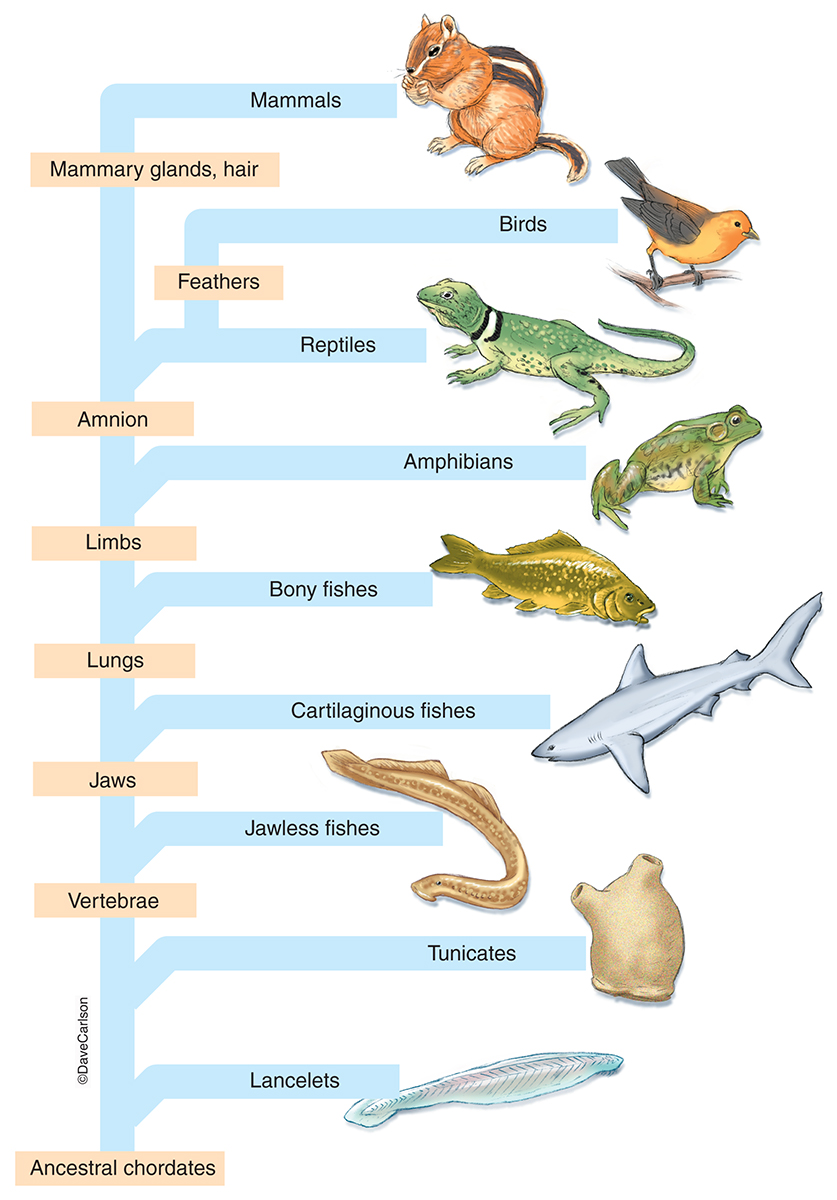Chordates are a group of animals that includes vertebrates, such as mammals, birds, reptiles, and amphibians, as well as some invertebrates, such as lancelets and tunicates. The name chordate comes from the Greek word for “heart,” referring to the fact that all chordates have a notochord at some point in their development. The notochord is a rod-like structure that provides support for the developing embryo and helps to stiffen the body. In vertebrates, the notochord is replaced by the spinal column during development.
All chordates share certain features: a dorsal nerve cord running along the back (the spinal cord in vertebrates), pharyngeal gill slits (openings in the throat region used for filtering water), and a tail extending beyond the anus (in most cases). These features are present at some point during an animal’s life cycle; for example, many tadpoles have tails but lose them when they metamorphose into frogs. Chordates also share certain developmental traits: all members of this group start out with a hollow central nervous system (the brain and spinal cord); these structures develop from infoldings of tissue in embryonic stages. Additionally, chordates undergo bilateral symmetry during development; this means that their left and right sides are mirror images of each other.
The main difference between chordates and other animals is the presence of a backbone made up of vertebrae, which gives this group its name (vertebrates means “animals with backbones”). However, not all chordates have vertebrae; some invertebrate members of this group lack them altogether. The type of skeleton present in a given species depends on its evolutionary history; for example, fish were among the first animals to evolvebackbones, while reptiles evolved them later on. Mammals represent another major branch of the chordate family tree; we ourselves are members of this large and diverse group!
There are approximately 60 000 known species of chordates alive today; however, this number is likely to increase as new species are discovered (especially among invertebrate groups). This wide variety of shapes and sizes is due to different lifestyles adopted by different species over time. For example, some animals have become land-dwellers while others remain aquatic; still others have taken to the air! As you can see, there is no one “chordate body plan.” Instead, these animals have adapted to their environments in many different ways.


